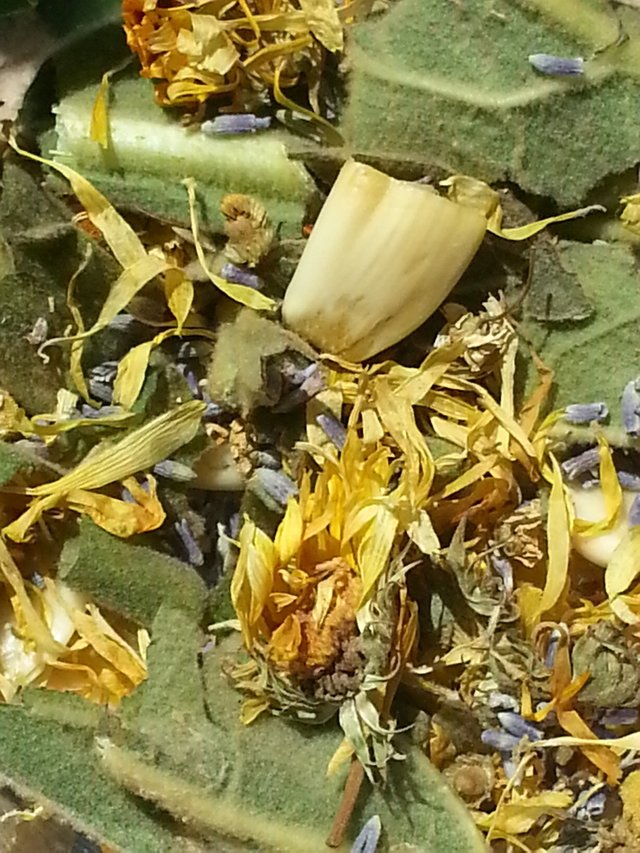Herbal Remedies for Earaches & Ear Infections

Image courtesy of lemonade at FreeDigitalPhotos.net
When your child is suffering with an ear infection or earache, it’s hard not to feel helpless. We want to take away their pain, and often turn to medications and antibiotics to do this. However, unless the situation is severe, we could be doing our childrens' immune systems a disservice by turning too frequently to medications. Studies have shown that many childhood ear infections will often clear up on their own in a few days. This means that worried parents can focus more on offering comfort and immune boosting measures than directly combating the pathogen behind the infection. Herbalists have long turned to mullein herb and garlic to soothe the discomfort of earaches and ear infections. Let's take a closer look at these two powerful plants.
Read on to take a closer look at the big hitters in this, and many other herbal earache oil remedies: Mullein and Garlic.
Mullein (Verbascum thapsus) Medicinal Uses

Mullein (Verbascum thapsus) is your ally in dealing with earaches and infections. Look at those gorgeous, fuzzy leaves! Image by Jennifer Capestany
Once you learn what mullein (Verbascum thapsus) looks like, you'll never confuse it with another plant. Soft, fuzzy, gray-green leaves are the hallmark of this sturdy weed. You can find mullein growing wild or easily grow it yourself. When it flowers, a tall stalk shoots up from the basal growth, sprouting dozens of small, yellow flowers. This plant is big, folks! Basal growth can easily reach a 2 foot spread on the ground if not wider. The flower stalks reach upwards of 5 feet with some super happy plants reaching higher than 7 feet tall. Mullein can thrive in some very poor soils, and endure drought.
All parts of the plant except for the seeds (poisonous) are used medicinally. I like to call mullein a guardian herb, because of its protective and bolstering properties. Thinking of mullein calls to mind words like strength, pillar, guardian. Indeed, most of this herb's functions on the body are supportive, clearing, and bolstering. Mullein is known for being:
- expectorant
- anti-spasmodic (respiratory disorders)
- soothing and tonic to respiratory system
- antibacterial
- anti-inflammatory
- safe for children
- mildly pain relieving
Mullein finds its way into medicinal infusions, tinctures, tea blends, herbal smokes, poultices, and oils. Leaf and flower are typically used to make an infused oil for earaches and ear infections. Note that the fuzzy leaves can be an irritant for some.

Dragonfly perched on the tip of mullein's flower stalk, just about to bloom. Image by Christopher Bayer.
By itself, mullein can be a very effective remedy for earaches and ear infections. Combine it with garlic, and you've got a winning combination.
Garlic (Allium sativum) Health Benefits

Image courtesy of SOMMAI at FreeDigitalPhotos.net
Garlic (Allium sativum) is well known as a cooking herb, but this flavorful bulb from the onion family has been used medicinally for thousands of years. Garlic has numerous and complex actions on the body. To name a few of these, garlic is known for being:
- immune enhancing
- antibacterial
- antifungal
- expectorant
- improves cardiovascular function
- hepatoprotectant (liver)
- vulnerary (wound healing)
The best way to get garlic's benefits is to simply eat it, raw or cooked. Tinctures, pills, powders, vinegars, tonics (like fire cider), oils, and more are available. All have been demonstrated to contain garlic's active constituents. 1-2 cloves a day is enough to be beneficial. I don't make a salad dressing or pesto without a little minced garlic. In fact, virtually no recipe in my home is cooked without garlic added for flavor and health benefits. The oil in particular is what's chiefly used as a remedy for earaches and ear infections.
Using an Infused Oil for Ear Pain

The herb blend that I use for earache oil in my own home. Image by Jennifer Capestany.
The goal with using an herbal earache remedy is not so much to function as a broad based antibiotic, but to offer comfort measures to the child, gently boost the immune system, and try to help with the pain while their own immune system goes through the healing process. If you want to try making your own infused oil, you can try this simple recipe.
Herbal Oil Recipe for Earaches & Ear Infections
What You'll Need:
- mullein leaf or flower (fresh or dried), leaves chopped
- 2 large, fresh garlic cloves, roughly chopped
- organic extra virgin olive oil
- oven-safe glass bowl, 1 cup size
- 1 tsp dried lavender flower (optional)
- 2 tsp dried chamomile flower (optional)
Set your oven to its lowest temperature. Add enough fresh mullein herb to fill your oven-safe, glass bowl. If using dried herb, just fill to a quarter of the way up. Add garlic cloves to the bowl. Sprinkle in any additional herbs that you intend to use, like lavender or chamomile. Cover this mixture with enough olive oil to submerge the herbs. Poke any herb that's sticking out back under the oil level. Once the oven has come to temperature, place the bowl into it. Don't cover the bowl. Now turn your oven off. Yup, you heard me. We don't want the oil to burn, so shut the oven off, but don't open the door! Leave the oil to infuse in the oven for 2 hours. Again, don't open the oven door at all during this period. After 2 hours, remove the bowl from the oven, strain off the herbs, and there's your ear infection oil! Store it in the fridge in a nonreactive, sealed container.

Keep your earache oil refrigerated to preserve freshness. This is due to the fresh garlic content, which makes the product less shelf stable than oils that just feature herb content. Kept in the refrigerator, your herbal earache oil should keep for about a year. If you suspect that any bacterial growth has occurred, discard immediately and make a new one.
None of the ingredients in this remedy are known for being very reactive; however, always watch for adverse reaction and discontinue use if you suspect that one has occurred.
Most herbal earache oils are designed to be poured in small amounts directly into the affected ear, so it's important that you know whether the eardrum is pierced or not. Do NOT use this remedy if the eardrum is pierced.
To use, add ¼ to 1 teaspoon of the oil into the affected ear. Use a cottonball to catch any overflow. If you choose to warm the dosage (just the dosage amount, not the whole bottle), take special care not to overheat. You don’t want to burn your sweet child! Using at room temperature is perfectly fine and certainly the most careful approach. You can re-administer every few hours until relief is felt.
Additional Tips

Image courtesy of arztsamui at FreeDigitalPhotos.net
More things that you can do to help your child through an earache or ear infection:
- Gentle massage of the area around the aching ear, head and neck area.
- Chamomile or catnip tea are both calming and safe for children.
- Snuggles, stories, and warm drinks can go a long way toward making your child feel a bit better. Just be with them while they're ailing. It helps.
- Homemade soups loaded with vegetables will help to nourish and boost immune response.
- Let your child get all the sleep he or she wants. Rest is essential.
If you suspect that the ear drum is pierced, or the infection serious, see your doctor. Take notes about the progression of the infection as soon you detect it. This is valuable information both to you as the family herbalist, and to your doctor if you choose to go.
Editor's note: Information contained in this article is not meant to be a diagnosis for any medical condition or serve as medical treatment or medical advice of any kind. Herb infused ear oil is not designed for infants, who cannot tell you if their eardrum is pierced. It's also not appropriate for swimmer's ear. You own yourself, and are solely responsible for the safety of you and your children. Neither Prairie Hawk Botanica nor Jennifer Capestany will be responsible for injury. Article originally published at Prairie Hawk Botanica. Posted here to Steemit by the author and copyright holder.

Author: Jennifer Capestany
Jennifer is a clinical herbalist and health coach, specializing in autoimmune diseases like rheumatoid arthritis. Her interest in plant medicine led Jennifer to spend years studying herbology, physiology, and nutrition. She works one-on-one with her clients via her herbalist and health coaching business, Prairie Hawk Botanica. Jennifer lives on a homestead in rural Texas with her husband, 2 children, and various animals. In her spare time she loves to be in her large herb and vegetable garden. Sharing herb knowledge and her love of natural healing with others is her calling.
Very interesting, thank you for sharing! I love everything about natural healing. Following you
Thanks, @sature! I love to share knowledge on how to take our health into our own hands. I'll keep it coming!
Thank you for sharing your knowledge about healing with plants. I am very interested in the subject and I follow you to read more of your posts.
I appreciate that, @yoganarchista!
Good article I say honestly give it a try see if it works, great job upvoted.
Thanks, @simonjay! Let me know if you have any troubles with it.
You don't mention this in your post, so you can let me know if you're familiar with this:
That pungent smell when you cut garlic is a powerful cancer-fighting compound that's forming. That compound is called allicin. The problem is, heat destroys allicin, so cooking the garlic is destroying much of its nutritional benefits.
There is a way around this, however. After cutting the garlic, let it sit for 5-10 minutes before applying heat to it. Waiting these few minutes allows allicin to form a strong bond that is much more heat-resistant. This way, you can still cook your garlic while getting all its wonderful benefits.
I hear ya, @shenanigator. We're not going for cancer fighting properties with this particular remedy; however, since allicin (one among many medicinal components of garlic) does have a lot antimicrobial properties as well, letting the chopped garlic sit for 10 minutes before putting it in the oven would certainly maximize the amount of allicin that is chemically produced. So I think you're quite right to advise it as a standing pre-treatment for using fresh garlic: cut and let sit for a bit. The allicin itself won't stay around for long. Once formed, it very quickly breaks down into other organosulfur compounds. A good rule of thumb for those who like to cook with garlic is that if it still smells like garlic, there's still some healthy goodness in there. Thanks for commenting! Good advice!
Nice one,i always loved and cherished the healing power of natural remedies...please keep em coming...anyways i just followed u kindly follow back.